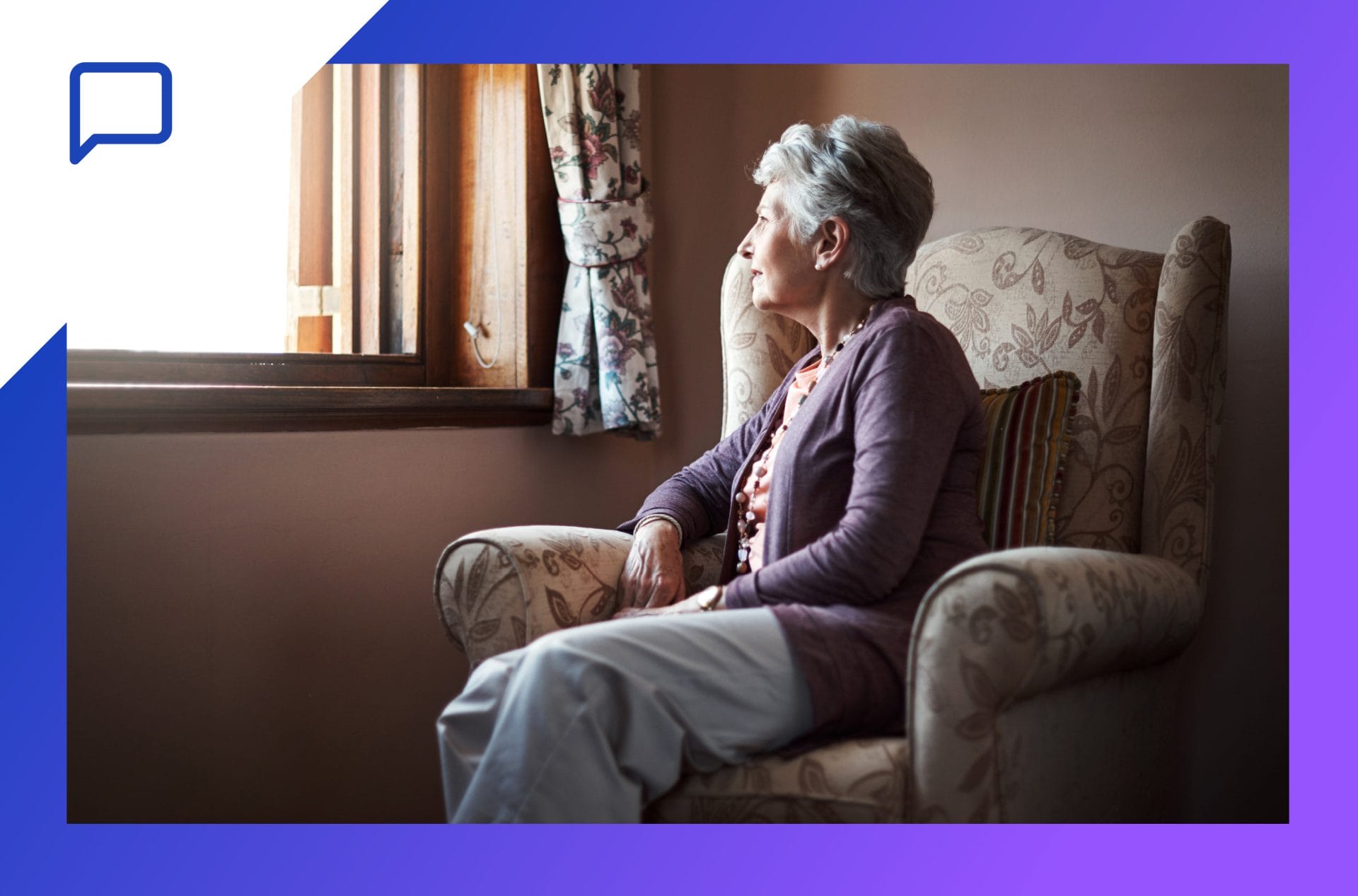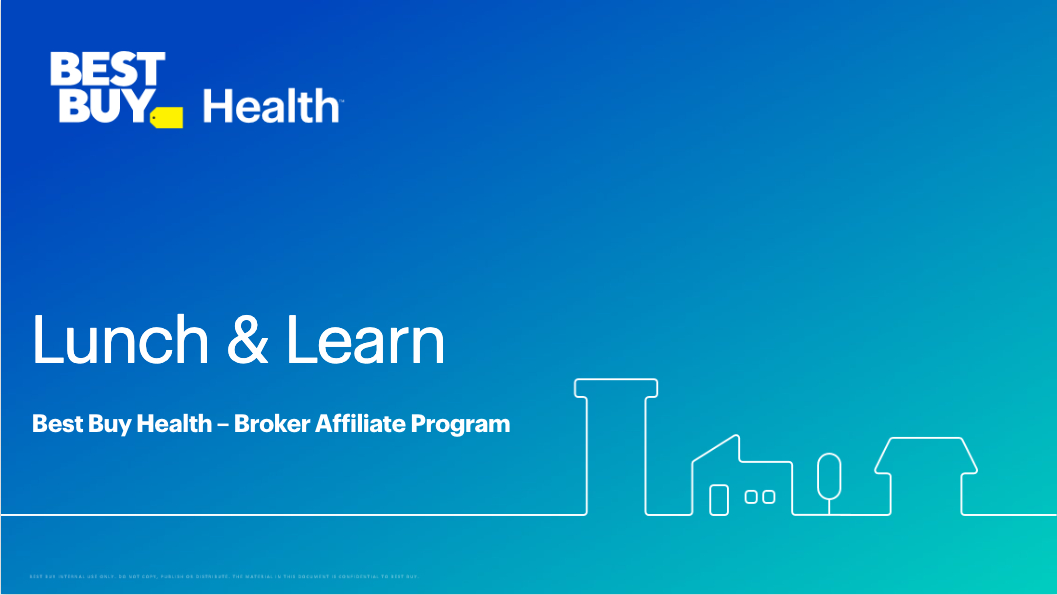Keeping members safe at home: the role of PERS in HCBS and aging in place
At 83, Ms. Johnson lives alone in the home she’s cherished for over 40 years. She manages her medications, cooks her meals, and values her independence — but one fall, one missed dose, or one medical emergency could turn her world upside down. Like millions of others who rely on Medicaid for long-term services and supports (LTSS), she wants to stay in her home and avoid moving to an assisted living community.
Institutional LTSS care is one of the most expensive services Medicaid covers, with nursing facility care averaging nearly $100,000 per person per year and consuming a disproportionate amount of LTSS spending.1 For Medicaid plans, the challenge is clear: how do they keep high-need members like Ms. Johnson safer, healthier, and more independent at home while also controlling rising costs?
The answer lies in fully leveraging the Home and Community-Based Services (HCBS) waiver and embracing smart, scalable, member-centric solutions that support care in the home.
Once known simply as “emergency buttons,” personal emergency response systems (PERS) have evolved into powerful tools that can help plans keep members safer, more connected, and independent—while delaying or reducing the need for costly institutional care. Importantly, they’re also covered under most HCBS waivers.
In this blog, we explore three ways Best Buy Health’s PERS solution can help Medicaid members hoping to age with dignity—and how they can support Medicaid plan goals around safety, affordability, and whole-person care.
- Increase safety in the home
PERS is often referred to as an “emergency button,” and for good reason. Its most well-known feature is providing one-touch access to emergency assistance, ensuring help is available when it’s needed most.
Whether it’s a medical emergency like a stroke or heart attack, a fall, or a general safety concern, PERS provides immediate access to emergency services when used appropriately. It offers peace of mind and can help prevent issues from escalating into serious health events or avoidable institutional care.
For instance, if a member suspects they are having a stroke, time is of the essence. The faster they call for help, the greater the chance of minimizing long-term damage and preserving their independence. According to a study by the National Institute of Neurological Disorders and Stroke, strokes caught early are more likely to result in better recovery outcomes, while delayed response can increase the likelihood of long-term disability and the need for institutional care. With Best Buy Health’s PERS device, members can simply press a button, and help is on the line in seconds.
The same is true for falls. Falls are the leading cause of injury among adults aged 65 and older, and an estimated three million of these incidents lead to emergency department visits.3,4 Lying on the floor for long periods of time after a fall can lead to serious injuries, higher rates of hospitalization, and an increased likelihood of long-term care placement.
The Best Buy Health PERS device can include optional built-in fall detection technology designed to recognize the types of falls most common among older adults. When a fall is detected, the device automatically initiates a call for help — even if the individual is unable to press the button. Beyond reactive support, Best Buy Health also offers a proactive Fall Risk Mitigation Program that aims to help reduce the likelihood of falls before they happen. This program is designed to help Medicaid plans lower hospitalization rates and associated costs, improve health outcomes, and help members stay safer and more independent in their homes for longer.
- Identify and proactively address social determinants of health
In addition to providing emergency support at the push of a button, the Best Buy Health PERS solution also offers social care services delivered by trained professionals in our Caring Center. Over 70% of calls to our Caring Center involve social care services, demonstrating that members actively engage with and benefit from social care support. Our Social Care agents, who are licensed and limited licensed social workers, can identify common social care needs, including social determinants of health (SDOH) like food insecurity, housing instability, and transportation challenges.
But our offering goes beyond reactive SDOH identification by offering personalized programs that help health plans proactively address SDOH to support members with higher levels of need. In addition to our Social Care agents addressing SDOH via inbound calls from members, we’re also able to use data analytics from PERS usage to identify specific member subgroups who may benefit from targeted support, including members affected by SDOH. Our dedicated Social Care team then provides personalized outreach—through wellness checks, caregiver coordination, and more—to proactively address those needs.
One of the most common SDOH our team sees is social isolation. One study showed that socially isolated older adults face a higher risk of poor health outcomes, including cardiovascular disease, stroke, dementia, cognitive decline, depression, anxiety, and more.5 Our Social Care agents are trained to identify and address social isolation among members. We also offer a comprehensive Social Isolation Prevention Program designed to proactively engage isolated members through social isolation risk assessments, tailored outreach, PERS devices, connections to community resources, and more. In a recent pilot study of our program, our Social Care team successfully reduced members’ social isolation risk scores by 11%.
So, while PERS devices are certainly valuable for emergency response, Best Buy Health extends their value by supporting critical social care and identifying and proactively addressing SDOH among members.
- Drive down costs for your organization
For Medicaid plans under constant pressure to improve outcomes and manage tight budgets, the cost of doing nothing is high. Just one avoidable hospitalization can cost thousands of dollars, and a transition to institutional care can increase annual costs significantly. The Best Buy Health PERS solution offers a proactive approach that can enhance member satisfaction and engagement and reduce costly interventions through data-informed care. It can proactively help members like Ms. Johnson stay safer at home while reducing expensive emergency interventions and care transitions.
By utilizing the Best Buy Health PERS solution, Medicaid plans can:
Prevent unnecessary hospitalizations and emergency room visits
Our PERS device enables fast response during medical events, helping to prevent complications that lead to ER visits or hospital admissions.
Reduce the risk of institutionalization
We already mentioned that nursing facility care costs Medicaid nearly $100,000 per person per year. By providing a safety net at home, PERS can help delay or even prevent transitions to institutional settings. That’s not just better for the member’s quality of life; it’s a major win for cost containment.
Extend the reach of case managers
Our PERS solution is more than a device. It’s a bridge to critical member support. With a 24/7 Urgent Response and Social Care team, our services can act as an extension of your case managers to better address SDOH, which, if left unaddressed, can often lead to more costly care. Rather than being incentivized by the number of calls they complete, our agents are driven by a commitment to truly supporting each member.
Scale waiver-compatible care
Because PERS is covered under most HCBS waivers, it’s a highly scalable, low-barrier solution for Medicaid plans looking to extend support across large populations. Best Buy Health takes that a step further because we can leverage Best Buy’s robust infrastructure and supply chain to streamline product procurement and delivery, while providing seamless setup and ongoing support through our trusted health-tech experts at Geek Squad Health. We are uniquely positioned to help you scale quickly and effectively.
What this all means
PERS is no longer just a reactive tool — it’s a cost-effective, member-centric solution that can help Medicaid plans achieve what every member like Ms. Johnson deserves: better safety, more independence, and the chance to age at home with dignity. When used strategically, our PERS solution can transform how aging and vulnerable populations are supported. It can build trust, improve lives, and strengthen the connection between technology and compassionate care.
If you’re launching or expanding a Medicaid plan and looking for a trusted partner to advance your HCBS strategy, reach out today to learn how Best Buy Health can help achieve your goals.
SOURCES
1: Medicaid and CHIP Payment and Access Commission, Estimates on Medicaid Nursing Facility Payments Relative to Costs, January 2023.
2: Neurology, Early stroke treatment associated with better outcome, National Institute of Neurological Disorders and Stroke, December 2020.
3: Centers for Disease Control and Prevention, Older Adult Falls Data, October 28, 2024.
4: National Library of Medicine, Cost of U.S. emergency department and inpatient visits for fall injuries in older adults, Johns Hopkins, University of Maryland School of Medicine, Drexel University, February 2024.
5: National Library of Medicine, Social Isolation and Loneliness in Older Adults: Opportunities for the Health Care System, National Academy of Sciences, February 27, 2020.


